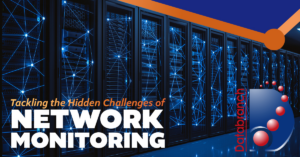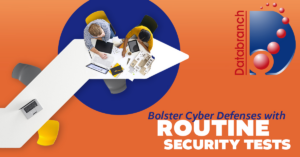
Our team would like to raise awareness to a recent LastPass phishing campaign affecting our customers.
This is related to the CryptoChameleon phishing kit which has been associated with crypto thefts (more information on this kit can be found here).
A cybercriminal can use these kits to create fake websites to steal passwords and other authentication data and either use these credentials themselves or sell them to other criminals.
Victims are directed to fake websites via phishing emails, SMS messages, or even direct phone calls (vishing).
What the bad actors are doing:
This campaign is now using “tickets-lastpass[.]com” as its primary phishing page and appears to have shifted primarily to texting (SMS messages) as the main point of contact.
Customers are also receiving a call from an 888 number claiming their LastPass account has been accessed from a new device and instructing them to press “1” to allow the access or “2” to block it. Pressing 2 will lead you to a bad actor attempting to gain access to your account.
Please contact the Databranch team immediately at 716-373-4467 x 4 or [email protected] if you receive correspondence related to your LastPass account.
Read More

Are you prepared to face a cybersecurity breach, a natural disaster or a system failure? Such disruptive events can strike at any moment, causing chaos and confusion.
But don’t worry. With an effective incident response plan in place, you can handle any incident with confidence.
This blog is intended to help you enhance your plan simply and straightforwardly. So, let’s dive in and make sure you’re ready for whatever comes your way.
Best Practices for Effective Incident Response Planning
To be well-prepared for any incident, it’s important to follow the steps below:
1. Identify and Prioritize Critical Data and Assets
Knowing precisely what resources you have helps you allocate them efficiently during an incident, saving time and minimizing overall damage. Threat modeling is a process used in cybersecurity that is beneficial in this regard. It involves identifying potential threats and vulnerabilities to an organization’s assets and systems.
2. Establish a Dedicated Team
A cohesive and well-trained team with clearly defined roles can work together to ensure an efficient and effective response.
3. Conduct Regular Trainings
Regular training helps keep your team informed of the latest techniques and threats, ensuring they can handle any situation with confidence. Our Breach Prevention Platform and Security Awareness Training that comes with simulated phishing tests that will train your employees in spotting real world threats.
4. Implement Continuous Monitoring
Continuous monitoring systems can detect incidents early and take action before they escalate, potentially saving your organization from significant damage.
It is critical for any business to survive and thrive in today’s cybersecurity environment which is why Databranch provides a 24 x 7 proactive monitoring and alerting service for our managed clients. Visit us here to learn more and get started.
5. Establish Clear Communication Channels
Clear communication channels within your team and with external stakeholders ensure that everyone is on the same page during the response, minimizing confusion and errors.
6. Develop a System to Categorize Incidents
Categorizing incidents based on their severity and impact ensures that you can respond appropriately to each incident, minimizing long-term damage to your organization.
How we can Help
All businesses today must have a solid incident response plan against ever-evolving cybersecurity threats. That’s where Databranch can be your strategic partner and your first line of defense against cyberstorms.
If you’re uncertain about how to approach incident response planning, we can help you in the following ways:
- We’ll customize an incident response plan that aligns with your goals and challenges.
- We’ll identify vulnerabilities and rank incident response planning through risk assessments.
- We’ll help you build a fully equipped incident response team with clear roles.
- We’ll suggest and apply advanced security technologies to boost your detection and responsibilities.
- We’ll establish continuous monitoring to detect and respond to potential security incidents quickly.
- We’ll ensure that your incident response plan complies with legal and regulatory requirements.
- We’ll assist with post-incident analysis to refine response plans based on lessons learned.
Take Control of your Incident Response Plan
Don’t wait for a security breach to happen. Our team has years of experience and expertise to ensure the safety of your data. Take charge of your incident response plan now by contacting us at 716-373-4467 option 6, or [email protected] to schedule a no-obligation consultation with our team of experts.
You can also download our infographic to review the 4 stages of an incident response plan.
Read More

Worried about cyberattacks hitting your business? You’re not alone.
Cyberattacks pose a real danger to businesses like yours and without a solid incident response plan, your business won’t be able to recover quickly, resulting in extensive losses. The good news, however, is that an incident response plan can help.
Through this blog, we’ll show you the common mistakes, myths and misconceptions that can stop you from building a strong response plan. We’ll also share simple solutions that will help you safely navigate cyber challenges.
Avoid these Mistakes to Build a Strong Response Plan
Here are a few common mistakes that all businesses should avoid:
Mistake 1: Thinking cyber incidents only come from external attacks
- By ignoring internal threats, you’re creating opportunities for cyberattacks.
- Internal mistakes, like ineffective processes or human errors due to inadequate training, can also lead to data breaches.
Solution: Invest in your employees and set up a process
- Train your employees on cybersecurity best practices and establish protocols for handling sensitive information.
- Periodically review your internal processes. This will help you find and resolve issues in your procedures that could lead to data leakage.
- Looking for an effective cybersecurity training platform? Reach out to Databranch today to discuss our Breach Prevention Platform and Security Awareness Training that comes with simulated phishing tests.
Mistake 2: Focusing only on technology
- You can’t build an effective incident response plan by solely focusing on technology. While tech solutions are valuable, they’re only effective when they are efficiently leveraged by a team of trained personnel.
- A solid response plan goes beyond technology and includes communication plans, legal considerations and damage control strategies.
Solution: Build a complete response plan
- Train your response team on both tools and processes. Don’t focus solely on the technology.
- Develop clear communication protocols.
- Define clear roles and responsibilities.
- Ensure your team understands your legal obligation to report and comply with data breach regulations.
Mistake 3: Not updating your response plan
- It’s a common misconception that an incident response plan, once created, need not be updated. However, the truth is, without regular review, updates and practice, a response plan will become ineffective.
- Also, without simulations and post-incident analysis, you won’t be able to find the root cause of a problem and avoid future reoccurrence.
Solution: Consistently review your response plan
- Establish a process to hold regular reviews.
- Adapt your response plan to keep up with the evolving threat landscape.
- Conduct periodic simulations to refine your response strategy and ensure team readiness.
The above-mentioned solutions will help you build a proactive incident response plan. However, the best strategy is to get the help of experts, like Databranch, who have the proper resources and tools.
Databranch not only offers a suite of cost-effective managed services that proactively monitor and support your network and technology infrastructure, but our backup and recovery solution can quickly restore your environment and have you up and running if a disaster were to occur.
Building Resilience: Partner for a Robust Incident Response Plan.
Ready to fortify your business against cyberthreats? Use the form below to download our checklist and take a step towards starting your incident response plan.
All businesses today must have a solid incident response plan against ever-evolving cybersecurity threats. That’s where Databranch can be your strategic partner and your first line of defense against cyberstorms.
Choose a partner who can give you complete peace of mind. Reach out today at 716-373-4467 option 6, or [email protected].
Read More

We are very pleased to announce the promotion of Josh Britton to Systems Engineer!
Josh’s dedication to our clients and expertise in our technologies have significantly enhanced the level of service we provide.
Josh has taken a proactive approach to staying updated with certifications, and his collaborative efforts in seeking out solutions, improvements, and efficient tool utilization with the team are truly commendable.
We have no doubt that Josh will excel in his new role and continue to make valuable contributions to the success of our team and clients.
Please join us in congratulating Josh for a well-earned promotion!
Read More

In the world of business, your data holds the key to understanding customers, market trends and internal operations. Making the most of this information is crucial for improving customer experience, driving innovation and enhancing overall productivity.
You can unlock the full potential of your digital data with efficient data management and data governance.
Data management is all about organizing, securing and retrieving information in a way that makes sense. Well-managed data streamlines processes, encourages collaboration and provides you with reliable business insights, giving your business a real edge.
It’s crucial to know the difference between data management and data governance to get the most out of your data. Although the terms are sometimes used interchangeably, understanding the difference is essential for navigating the complexities of the data-driven era.
Along with this, data loss disasters come in many forms. Ranging from full-scale natural calamities to cyberattacks and even simple human errors. Apart from financial and reputational damage, failing to protect valuable data can also result in expensive lawsuits.
That’s why businesses, regardless of size, must have a backup and disaster recovery (BCDR) plan. By implementing a foolproof BCDR, you can quickly get your business back up and running should disaster strike.
Demystifying Data Governance
Data governance is about setting rules for managing your data. It addresses data ownership, usage and quality while ensuring privacy and security standards are met. The goal is simple: to make sure your data is accurate, consistent, and secure by following the rules set by regulators and your own policies.
Compared to data management, which deals with the technical side of things, data governance focuses on using data responsibly and ethically, aligning with your organization’s goals.
It is essential to have a clear understanding of data governance in order to establish a robust foundation for data management.
Navigating The Importance of Data Governance
Inconsistent data can lead to bad decisions. Poor data governance can even get you in trouble with regulators. On the flip side, good data governance can help you make better decisions, innovate and increase profits. It’s all about making sure your data is accurate and reliable for making smart choices.
Mastering Data Governance Best Practices
Follow these simple practices for effective data governance:
Start Small
Begin with a manageable workload, ensuring a smooth transition as you gradually scale your efforts.
Build a Dedicated Team
Form a committed team equipped with the necessary skills and resources dedicated to your data governance program.
Set Clear Goals
Define transparent objectives for your data governance, communicating them clearly with your team and stakeholders.
Make Way for Open Communication
Foster stakeholder transparency by openly communicating with external partners, building trust and ensuring alignment.
Embed Data Governance in Every Department
Integrate data governance into every department, creating a collaborative and cohesive approach to data management.
Identify and Mitigate Risks
Recognize and address risks at key points in your data governance program, mitigating potential threats to its success.
Evaluate Projects
Assess your projects upon completion, identifying areas for improvement and learning from both successes and failures.
Consistent Refinement
Continuously refine your governance framework to keep it up to date and aligned with your organization’s evolving needs.
Take Action Now
Data can be tricky, taking time and knowhow. As your trusted IT partner, we get the ins and outs of data management. Let us guide you to make the most of your data, helping you make informed decisions that drive growth.
Reach out today at 716-373-4467 option 6, or [email protected] to get started.
Read More

In today’s business landscape, data isn’t just power — it’s the very lifeline that fuels business decisions, drives innovations and shapes strategies. However, businesses often find it difficult to effectively manage the vast amounts of data they hold, and that’s where data management comes into play.
Simply put, data management is all about collecting, storing and analyzing data in the most efficient way possible to help businesses like yours make informed decisions, optimize operations and ensure cybersecurity.
In this blog, we’ll look at the consequences of improper data management and discuss how businesses like yours can effectively deal with these challenges.
Potential Consequences of Improper Data Management
Failure to manage your data effectively can lead to the following consequences, including missed opportunities, inefficiencies and even business-ending events.
Poor Decision-Making
Imagine navigating the roads using a faulty map. You’re bound to end up in the wrong place. Without accurate data, you will be charting a flawed business trajectory toward wasted resources, missed market opportunities, and ultimately, strategic missteps that hurt your business.
Reduced Efficiency
If your employees are working in siloed systems, drowning in a sea of duplicate data and wasting precious man-hours sorting the mess, you won’t have time for productive work. Ineffective management erodes productivity and keeps your business from growing.
Increased Risk
A leaky boat is bound to sink. Poor data management can sink your business by exposing you to security risks and even data breaches that could result in non-compliance with regulations, leading to legal issues and fines.
Implementing a well-thought-out cyber risk management strategy can significantly reduce overall risks and strengthen your cyber defenses. Visit us here to learn more.
Decreased Customer Trust
Mishandling of customer data is like breaking a sacred covenant. It fractures your reputation and erodes trust, leading to client disengagement and a tarnished brand image that could be difficult to rebuild.
Competitive Disadvantage
Think of a large, inaccessible gold mine. Now, imagine all that untapped precious metal. That’s exactly what businesses that lack data management strategies resemble. If you fail to leverage data, you are bound to lose ground to businesses that use analytics and AI to unlock groundbreaking insights and fuel future success.
Increased Costs
Poor data management slowly eats away at your revenue and bloats your expenses. You end up incurring expenses on storing duplicate or irrelevant data that do not contribute to your business growth.
Data security incidents can also bring business to a grinding halt, costing a business thousands. Do you know what the cost of downtime is for your business? Visit our Recovery Time Calculator if not.
How We Can Help with Data Management
The good news is that you can partner with trusted guides who are equipped with the expertise and resources to transform your hidden data liabilities into revenue-churning assets.
Here’s how an IT service provider can put you on the road to success:
1. Never Worry About Data Loss
Adopting a comprehensive backup and business continuity and disaster recovery (BCDR) strategy is a necessary addition to every data management plan.
Databranch offers our BCDR solution from Datto, the leader in Total Data Protection. Not only will the Datto backup all your data to the device itself, but it will also backup everything to 2 separate offsite cloud storage locations.
So, in the event that the local device is destroyed, you can still access your information even from a remote location.
With Datto you will receive daily backup verifications and screen shots of your virtual servers give you peace of mind and ensure that your backup data is working and accessible to you when you need it.
2. Get Advanced Protection
Databranch is here to keep your business safe from cyberthreats that are lurking in the dark. We allow you to focus on your business by knowing that your assets are being protected with advanced security measures that can repel sophisticated attacks.
Our managed client platform provides a comprehensive suite of security tools that safeguard your network and bolster your cyber defenses. Reach out to our team today to learn more.
3. You Have Access to Top IT Experts
Imagine having a team of IT experts working for you without breaking the bank. Data problems can bring your business to a halt, but with the help of Databranch, you can easily manage or resolve any data-related issues anytime, anywhere.
4. Always Stay Compliant
Data compliance regulations related to privacy and security are always evolving. It can be tough to keep up with rules and regulations while managing the day-to-day activities of your business. However, Databranch provide some guidance which will help you stay ahead of the curve and ensure you meet the stipulated regulations.
5. Tailored Strategies that Lead to Success
Tailor made data management strategies will help meet your business goals and allow you to transform your data into a strategic asset.
Secure Your Future
Your data is your gold mine with precious untapped potential. However, navigating the tricky data management terrain on your own can be challenging — and that’s where Databranch comes in. Consider partnering with us so we can help you unlock the power of data for your business.
Reach out to Databranch today at 716-373-4467 option 6, or [email protected] to schedule a meeting with one of our experienced team members.
You can also download our eBook today to start the process of turning your data into a powerful engine for success.
Read More

Your network is your business’s lifeline.
A healthy and secure network is critical for seamless communication and operational efficiency. That’s why it’s crucial to proactively identify issues and optimize performance through continuous network security monitoring.
However, as you keep a close watch, you’ll discover many issues lurking beneath the surface. In this blog, we’ll take a look at these hidden challenges and how to tackle them to ensure robust network security.
Hidden Challenges of Network Monitoring
Here are some of the challenges that hide in plain sight and impact your business more than you realize:
Data Overload
There are various devices and systems connected to a network, and at times they can generate an overwhelming volume of information, slowing down the monitoring process.
The sheer abundance of information makes it challenging to manage, analyze or derive any meaningful insights from the data. In such a situation, you can easily miss out on critical issues that can adversely affect your business.
Complexity
Modern networks are complex. Every device, application or system within the network is diverse. Without sophisticated tools and specialized expertise, it would be like solving a puzzle blindfolded.
The best way to deal with this challenge would be to reach out to Databranch who can efficiently streamline the entire monitoring process.
Integrations with Legacy Systems
Integrating older legacy systems seamlessly into modern monitoring frameworks can be tough. Failing to properly integrate older tools with current technology can leave visibility gaps and affect the overall performance.
That’s why it’s mission-critical for your business to implement monitoring solutions that not only keep pace with evolving technologies but also seamlessly integrate with older systems as well.
Costs
To ensure your network monitoring tools offer peak performance, you must keep up with the latest tech. However, monitoring tools are expensive, and businesses with budget constraints might find themselves vulnerable to the latest cyberthreats.
That’s why Databranch offers a suite of cost-effective managed services that proactively monitor and support your network and technology infrastructure.
Scalability
As your business grows, so do the number of devices connected to your network and the volume of data as well. However, if your monitoring tools can’t scale to meet the need, it will adversely affect its ability to provide accurate and timely insights.
To overcome scalability issues, you must invest in monitoring solutions that can expand and keep up with your growing needs.
Privacy Concerns
As part of the network monitoring framework, the tools and solutions may record and analyze sensitive data, raising compliance concerns and privacy challenges. The problems related to privacy arise when the network monitoring practices don’t meet compliance standards, leading to legal repercussions and penalties.
That’s why it is a good practice to implement robust security measures, adopt encryption technologies and adhere to relevant privacy regulations. The NIST Cybersecurity Framework is a popular, user-friendly framework that empowers business leaders like you to boost organizational cybersecurity.
Businesses with solid cyber risk management strategies can build formidable cyber defenses, minimize risks, and reduce compliance and privacy concerns.
Skill Gaps
To efficiently monitor your network, you need professionals with expertise in network monitoring. However, it can be challenging to hire employees who can achieve results without compromising your business needs.
Databranch provides a 24 x 7 proactive monitoring and alerting service which allows you to take this off your plate and focus on your business needs.
Dynamic Environments
A network is like a thriving ecosystem that is constantly evolving, and your network monitoring efforts must stay up to date if you want to stay ahead of potential issues.
To address the challenge of dynamic environments, you must embrace agile monitoring solutions, leverage automation for quicker adjustments and adopt continuous improvement practices.
Achieve Sustained Growth
Overcoming your network challenges while ensuring your business runs smoothly can be tough, especially if you have to do it all on your own. Reach out to Databranch today at 716-373-4467 option6, or [email protected] if your business needs help. Not only can we secure and optimize your network, but also help your business achieve sustained growth.
Ready to transform your network challenges into opportunities? Download our checklist today to see where you network may need our expertise!
Read More

Businesses today face a range of cybersecurity threats, from social engineering attacks like phishing, to sophisticated ransomware. For business leaders like you, protecting your network is crucial since it is the lifeline of your business.
Any vulnerability in your network can compromise your sensitive data, operational integrity, and stakeholder trust. That’s why you must understand and address these threats through proactive measures, such as routine security scans and network testing.
In this blog, we’ll discuss the role of a robust network and demystify network testing intricacies.
Benefits of Routine Security Tests
A security test typically assesses the effectiveness of an organization’s security measures and protocols. Here are some of its benefits:
Identifies Vulnerabilities:
Through regular security scans, you can easily identify weaknesses in your system and proactively address potential threats before they can be exploited by cybercriminals.
It is important to conduct vulnerability assessments regularly, at least every quarter if not more frequently. This is due to the dynamic nature of information technology. Many changes occur on a day-to-day basis that can introduce new exposures associated with information security.
Security shortcomings found during a vulnerability assessment can almost always be fixed. Many times, the fixes are very easy to accomplish.
Assesses Security Measures:
Regular security tests allow you to establish continuous monitoring of security protocols. This helps you gauge the effectiveness of your security measures and make necessary changes when needed.
Here at Databranch, our Managed Service plans offer proactive monitoring tools that helps us detect threats before they can impact your network. They also provide increased protection from malware, ransomware, and phishing compromises.
All Databranch Comprehensive Care and Foundation Security clients also have scheduled automatic patching and Windows updates on their devices.
Ensures Compliance:
Security tests help align your security practices with industry standards and reduce the risk of your business running into any compliance issues.
Prevents Data Breaches:
Through routine security scans, you can easily identify and address vulnerabilities and fortify your organization against unauthorized access and potential data breaches.
Optimizes Incident Response:
Regular testing helps you refine and improve your incident response plan and ensures your security preparedness plan is effective and up to date. Simply put, being able to restore and recover important business data after a disaster is no longer enough.
Intelligent Business Continuity is Databranch’s answer to not only ensuring that your data is restored to its former state, but restored quickly, with little to no downtime or interruption to your business.
Strengthens Resilience:
Regular security testing helps you build a solid security posture, enhancing your organization’s ability to endure and recover from cyberattacks.
Helps Avoid Financial Losses:
By taking proactive measures to identify and address security risks, you can prevent potential financial losses associated with data breaches, legal implications and operational disruptions. Visit our website here to learn just how costly it could be if your business were to experience a disruption.
Fosters Continuous Improvement:
Regular testing fosters a culture of continuous improvement, allowing you to adapt and evolve your security strategies based on emerging threats and industry best practices.
Essential Security Testing Methods
By leveraging security testing methods, you can assess the effectiveness of your organization’s security measures. Here are two of the most efficient methods that can help you build a robust cybersecurity landscape for your business:
Penetration Testing:
Also known as pen testing, this involves simulating real-world cyberattacks on an organization’s network. The simulations provide valuable insights that help organizations identify and address security gaps before they can be exploited by cybercriminals.
Vulnerability Assessments:
This method involves using automated tools to scan networks, systems and applications for known vulnerabilities, misconfigurations or weaknesses. It helps organizations build a robust cybersecurity posture by proactively prioritizing and addressing potential threats before they can do any harm.
Boost Security Effortlessly
When it comes to the security of your network, you can’t take any chances. That’s why you should partner with Databranch and let the experts handle the heavy lifting. We can efficiently manage security testing for you and ensure your digital defenses stay protected. Contact us at 716-373-4467 option 6, or [email protected] for a no-obligation consultation and take the first step towards a more secure future.
Download our infographic today for a condensed roadmap on how routine security scans can optimize your network!
Read More

In the current digital environment, where cyberthreats are commonplace, it makes perfect sense to have cyber liability insurance. However, just having a policy in place doesn’t guarantee a smooth claims process.
Cyber insurance policies come with varying terms and coverage, requiring meticulous examination of inclusions and exclusions and deciphering technical jargon. Having a thorough understanding of your policy sets realistic expectations and prepares you to handle potential cyber incidents with confidence.
This blog aims to help you get the most out of your cyber liability insurance. Keep reading to learn more.
Mastering Your Cyber Insurance Claims
Here are some key steps to optimize your coverage:
Thorough Policy Understanding
Delve into the nuances of your policy. Scrutinize terms, conditions and coverage limits. Identifying inclusions and exclusions aligns your expectations effectively, empowering you to grasp the extent of protection offered.
Precision in Application
Accuracy is paramount when applying for cyber insurance. Detailed and precise information regarding your organization’s cybersecurity measures, risk management practices and past incidents or breaches aids insurers in evaluating your risk profile accurately.
Documentation of Security Measures
Maintaining comprehensive records of cybersecurity measures, policies, procedures and incident responses becomes crucial evidence during the claims process. These records showcase proactive steps taken to mitigate cyber-risks.
Timely Incident Reporting
Immediate reporting of cyber incidents or potential claims to your insurer as per policy requirements is essential. Swift notification initiates the claims early, allowing for a prompt investigation — a critical aspect of a successful claims process.
Detailed Loss Documentation
Comprehensive documentation and quantification of financial losses incurred due to cyber incidents are vital. Including costs related to business interruption, data restoration, legal fees and other expenses supports your claim’s accuracy.
Cooperation with the Insurer’s Investigations
Full cooperation with the insurer’s investigation, providing requested information, interviews and access to systems and records, is imperative. Failure to cooperate might lead to claim delays or denials.
Regular Policy Review
Consistent review of your cyber insurance policy is crucial. Align it with evolving business needs and changing cyber risk landscapes. This step allows necessary adjustments to coverage, endorsements or additional coverages matching your risk profile.
Enhancing Cybersecurity Practices
Continuously improve cybersecurity measures based on industry standards. Regular assessments to identify and mitigate vulnerabilities showcase a proactive approach, potentially influencing positive claim outcomes.
Databranch stresses the importance of conducting vulnerability assessments regularly, at least every quarter if not more frequently. This is due to the dynamic nature of information technology. Many changes occur on a day-to-day basis that can introduce new exposures associated with information security.
Security shortcomings found during a vulnerability assessment can almost always be fixed. Many times, the fixes are very easy to accomplish.
Expert Consultation
Seeking guidance from insurance professionals, legal counsel and specialized IT service providers offers invaluable insights. Their advice aids in optimizing coverage and effectively navigating the claims process.
Databranch can help your business implement many of the pre-requisites for a cyber insurance policy, such as performing vulnerability assessments, enabling MFA, restricting administrative privileges, and even installing a data backup and recovery solution.
Ensuring a Successful Payout
While obtaining cyber insurance is vital, maneuvering the claims process for a successful payout is equally essential. Our seasoned experts specialize in cyber insurance claims and understand policy nuances and claim procedures.
With extensive experience, we’ve successfully guided numerous businesses through complexities, offering tailored strategies to enhance claim success. Reach out to Databranch today at 716-373-4467 option 6, or [email protected] to schedule a no-obligation consultation to optimize your cyber insurance coverage and fortify your business against cyber incidents effectively.
Download our infographic today for more information on cyber insurance claims and why yours may be denied.
Read More

Is your business prepared to confront today’s growing cybersecurity threats?
Although adopting the latest technologies and industry trends is undoubtedly crucial, it is equally important to ensure that your business has the best cyber liability insurance. Think of it as an invisible shield protecting your business from devastating losses. However, to harness its full potential and ensure robust protection, it is critical to have a nuanced understanding of it.
In this blog, we’ll delve into the key considerations when shopping for cyber liability insurance. But before we do that, let’s first understand the difference between first-party coverage and third-party coverage.
First-Party Coverage vs. Third-Party Coverage
Every business today needs cyber liability insurance. To help businesses quickly respond and recover from data breaches, insurance providers have developed two types of cyber liability insurance – first-party coverage and third-party coverage.
Here’s how they differ:
1. Focus of Coverage
First-party coverage:
- Shields the insured business
- Protects against direct losses and expenses resulting from a data breach
Third-party coverage:
- Focuses on liabilities from third parties
- Covers claims made by third parties who suffered losses because of the insured business’s cyber incident
2. Costs Covered
First-party coverage:
- Covers only the insured’s direct costs
- Pays for revenue loss, forensic investigations, data restoration, public relations and customer notification services
Third-party coverage:
- Pays for businesses’ legal expenses
- Covers cyber-related liabilities, such as data breaches, privacy violations and defamation
3. Reputation Management
First-party coverage:
- Pays for expenses related to hiring public relations firms
- Aims to restore the brand image of a business after a cyber incident
Third-party coverage:
- Primarily focused on handling the legal aspects
- More concerned with defending against claims and settling third-party disputes
4. Beneficiaries of Coverage
First-party coverage:
- Directly benefits the insurer
- Provides direct protection to the insured party against direct losses
Third-party coverage:
- Benefits third parties, such as a business’s customers, clients and business partners
- Provides direct protection to those affected by a data breach suffered by the insured business
Key Things to Consider While Shopping for a Policy
Here are some key points to consider when shopping for a cyber liability insurance policy:
Coverage
Comprehensive coverage is key to reducing the impact of a cyber incident. Your business can become the victim of a data breach or a large-scale cyberattack at any time. That’s why it’s crucial to ensure that the policy addresses cyber-risks specific to your business.
Limits
Evaluate the policy to understand the coverage limits. The policy that you finalize should be able to handle the potential costs associated with a cyberattack, including legal fees, data recovery and business interruption expenses.
Exclusions
Study the policy outlines to understand what is excluded. Any limitations in your policy can make your business vulnerable. That’s why it’s crucial to know what is not covered by your insurance.
Incident Response
Make sure that the policy has provisions for developing and implementing a cyber incident response plan tailored to suit your business. Without a well-defined response plan, you won’t be able to effectively respond to a cyber incident.
Here at Databranch, our managed clients receive expert guidance if a cyber incident were to occur at their business. This includes device isolation through our software tool stack, immediate assistance from an engineer, and guidance if you have questions while submitting your insurance claim.
Price
Before finalizing a policy, compare and cross-check various policies, especially their costs and unique offerings. Although opting for the most affordable option can be tempting, it is crucial to ensure that the coverage you choose is best suited for your business needs.
Reputation
It is also important to do your due diligence and research the insurance company’s reputation. Look for an insurer with a good reputation and positive customer feedback. Choose a company that settles claims promptly, as that is a reliable indicator of the level of support you can expect when you need it.
Build a Resilient Future
Finding the right cyber liability insurance coverage for your business can be daunting. However, it can be even more challenging to get a payout when you need it the most. That’s where Databranch comes in.
We can help you improve your chances of securing coverage. Reach out to Databranch today at 716-373-4467 option 6, or [email protected], and let’s build a resilient future together. You can also download our checklist below which summarizes these essential steps when buying cyber insurance.
Read More


















